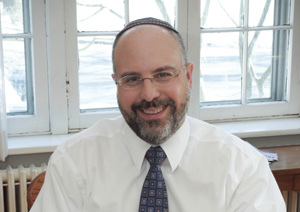What is the seder?
Published April 21, 2011
It is said that more Jews celebrate the Passover seder than any other Jewish ritual. Unfortunately the seder is often misconstrued as a prayer service or recitation, a gauntlet that must be endured in order to reach…drum role…the meal. As the old joke goes, “What is the fifth question asked at the seder?” “When do we eat?”
In truth the seder is not a prayer service, recitation or ticket to dinner. The way the Torah describes the seder has two aspects, the first is a meal, the Passover lamb eaten communally with matzah and bitter herbs, but the second aspect of the seder, the telling of the story, is not a telling of the story at all.
ADVERTISEMENT
The Biblical description of the seder always involves intergenerational dialogue. “When your child will ask you, “What is this service?”, and you shall answer, “Because with a strong hand God took us out of Egypt.”” The Torah describes this intergenerational discussion, a child asking their parent about the Passover four times and it is from this that we learn the notion of the four children. Each child asks in a different way and so must be answered in a unique way befitting their personality, learning style and level of understanding.
The Talmud says that we must do strange things at the seder, “in order that the children will ask.” For instance, we dip our foods, and in ancient Roman times when everyone had a small table next to their chaise lounge the table was removed in the midst of the seder; it is also suggested in Jewish law that we distribute nuts and candies during the meal, thus serving dessert first, all in order “that the children will ask.”
Jewish law is telling us that we can not just “tell” the story. There must first be a need to know. We must create a situation in which the seder participants are engaged such that they want to know, they are perplexed, and only then can discussion commence. In fact, some suggest that even today we should devise new strange actions to do at the seder, in order “that the children will ask.”
The seder provides an important lesson for us a Jews. One size, one presentation, one recitation, does not fit all. The Torah and Jewish tradition must be tailored to each individual. They must need to know, if not our messages fall on deaf ears.
ADVERTISEMENT
How should we impart Jewish wisdom today? How do we create the need to know in a generation that thinks it knows all? A generation littered with information yet starved for wisdom?
The message of the seder is that first we must know to whom we speak, know them intimately, what their concerns are, what makes them tick, they are not a number to be engaged in Jewish life but an infinitely deep individual, a unique Divine soul. Secondly we must do unusual things, things out of the ordinary, “so the children (and adults) will ask.” We must be creative as a Jewish community if we wish to engage the child, the family, and the community that, in many instances, does not know how to ask.
This Passover may we merit to find ways to creatively engage the Jewish people. May we do unusual things so they will ask and be intrigued, and may we know each as they are, appreciate who they are, so that we can engage as a people in the story of the Exodus and be freed from all our exiles.
My blessings for a freeing Passover to all.
D’var Torah
Parsha: Chol HaMoed Pesach
Rabbi Hyim Shafner serves Bais Abraham Congregation and is a member of the St. Louis Rabbinical Association.
















